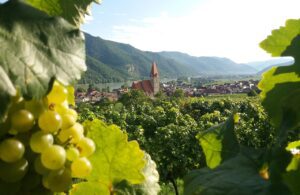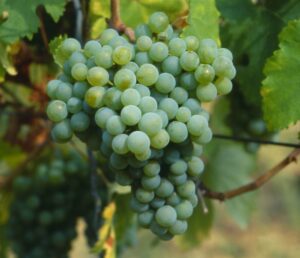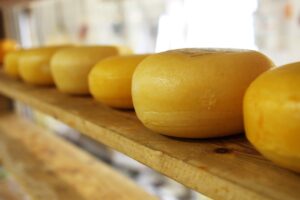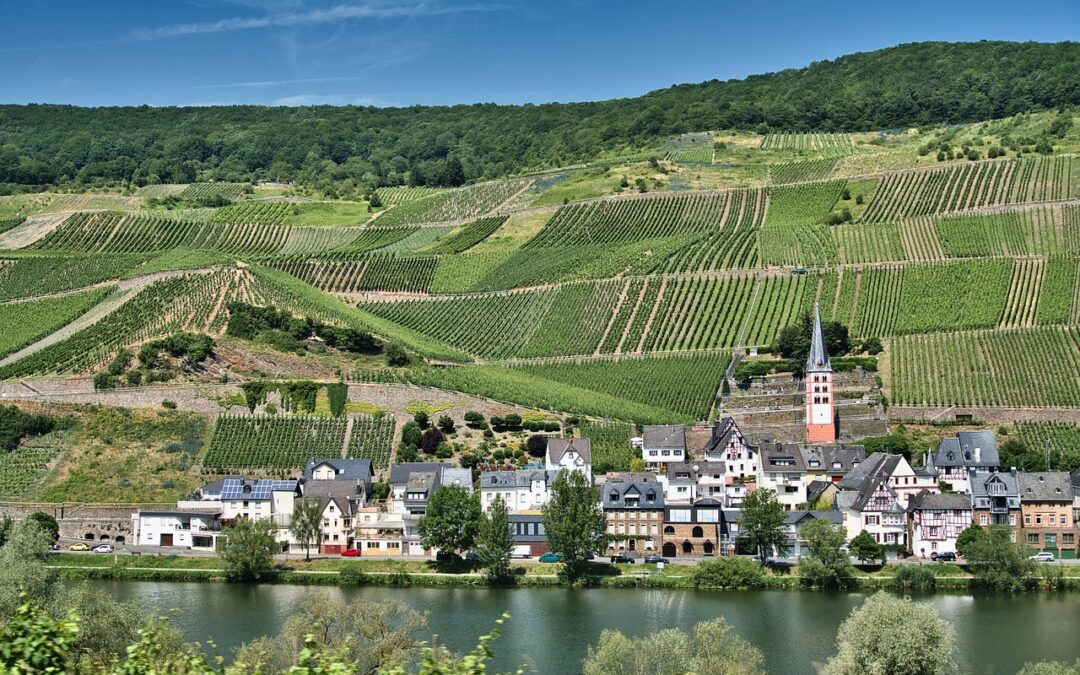By Bob Lipinski
“A waltz and a glass of wine invite an encore.” (Johann Strauss 1804-1849, Austrian Composer)
Although archeological evidence dates winemaking and grape-growing in Austria back thousands of years, its wines have always been overshadowed by those of Germany.
Austria, a German-speaking, European grape-growing landlocked country, is bordered by the Czech Republic, the Slovak Republic, Germany, Hungary, Slovenia, Italy, and Switzerland. Its vineyards are in the eastern half of the country, forming a crescent along the eastern border. Austria is about the size of the U.S. state of Maine and has approximately half the vineyard area of Germany. Österreich is the Austrian spelling for the “country.”

The country has four major wine-producing regions. From north to south they are Niederösterreich, Vienna (Wien), Burgenland, and Styria (Steiermark). Many grape-growing areas in Austria end in the suffix tal, meaning “valley.” Burgenland and Niederösterreich contain about 90 percent of the country’s vineyards.
Austria produces dry red and white wines, as well as semisweet and sweet whites, and even some very fine sparkling (sekt) wines. White grapes make up two-thirds of Austria’s total vineyard acreage, but red grape plantings have been increasing in recent years. Apart from Riesling to which Germany devotes a more single-minded focus, the two countries focus on different grape varieties for fine wines. Austria’s fine wine reputation results from the quality of its dry wines. Its major local grapes are:
Whites
Grüner Veltliner (GROO-nehr vehlt-LEE-nehr). A thick-skinned, medium acid grape variety. Grüner; the color green. It is Austria’s most planted grape variety.

Grüner Veltliner Grapes
Welschriesling (vehlsh-REECE-ling). A thin-skinned, high acid grape variety used principally for blending. It is not related to the Riesling grape.
Müller-Thurgau (MOOL-lehr TOOR-gaow). A thin-skinned, medium acid grape variety. DNA analysis revealed that Müller-Thurgau is a cross between Riesling and Madeleine Royale grapes.
Reds
Zweigelt (TSVIY-gehlt). A thick-skinned, medium acid grape variety developed in 1922 from a cross of Blaufränkisch and Saint-Laurent, by Fritz Zweigelt at the Klosterneuburg Institute. Zweigelt is the most widely planted red grape variety in Austria.
Blaufränkisch (blaow-FRANK-ish) (Translates to blue Franconian). A thick-skinned, high acid grape variety grown principally in Burgenland and used mostly for blending. Blaufränkisch is the second most planted red grape after Zweigelt.
Blauer Portugieser (BLAOW-ehr pohr-too-GEE-zehr) A low acid grape variety that is used mostly for blending.

While Austria produces many cheeses, most unfortunately are not imported. I have selected three cheeses below, which can be found (not in a supermarket) in cheese shops, that will be fun to try. Before serving the cheese, allow it to sit for 30 minutes to one hour at room temperature, which will soften the texture, release the aromas, and maximize the flavor.
Mondseer (MOND-see-uhr) A soft, disk-shaped cow’s milk cheese with a yellow-tan exterior and yellow interior with few irregular holes. It has a piquant, acidic, and robust flavor and, when sold in small wooden boxes, it is known as Mondseer Schachtelkäse. It was first made in Salzburg in 1830 and named after the monastery of Mondsee. It is similar to Münster.
Saint Michael (saint MEE-shehl) A wheel-shaped cow’s milk cheese with a brown rind and no internal holes. It is smooth textured with a pleasant, but mild flavor.
Tiroler Graukäse (tee-ROH-lehr grau-KAY-zeh) A most unusual cow’s milk cheese made from sour-milk curds that are washed with Penicillium mold during the ripening period. Square-shaped with a gray exterior and a very strong, pungent odor and very sharp, piquant, tangy, sour taste. Graukäse translates to gray cheese.
Bob Lipinski is the author of 10 books, including “101: Everything You Need To Know About Whiskey” and “Italian Wine & Cheese Made Simple” (available on Amazon.com). He consults and conducts training seminars on Wine, Spirits, and Food and is available for speaking engagements. He can be reached at www.boblipinski.com OR bkjm@hotmail.com


 Bob Lipinski, author of 10 books; writes, consults, and conducts training seminars on Wine, Spirits, and Food and is available for speaking engagements.
Bob Lipinski, author of 10 books; writes, consults, and conducts training seminars on Wine, Spirits, and Food and is available for speaking engagements.
Recent Comments